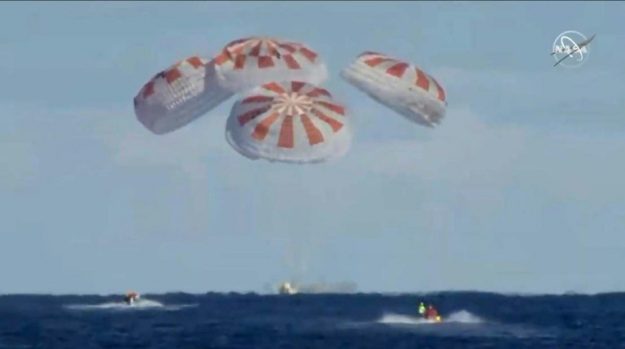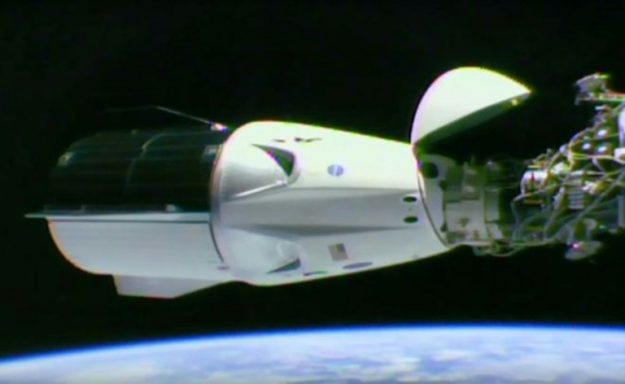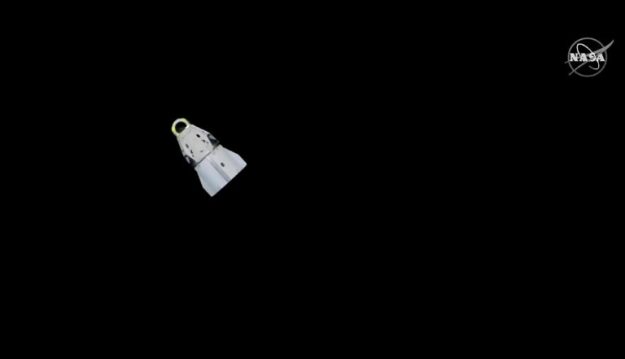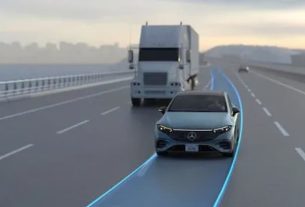SpaceX’s Crew Dragon capsule landed on Friday 8th March, 2019 in the Atlantic after six days in space, paving the way for new manned flights from the United States.
Mission accomplished for SpaceX’s new SpaceX Crew Dragon capsule. It landed Friday 8th March, 2019 in the Atlantic after six days in space, a demonstration that paves the way for the resumption of manned flights from the United States, stopped in 2011.
The seven-seater spacecraft, which had only one mannequin on board, landed 370 km off Florida at the exact time, 1345 GMT, slowed by four large orange and white parachutes, and close salvage ships waiting for it.
That’s how the Apollo mission astronauts returned to Earth, rescued by ships, and so the next American astronauts will end their space travel, perhaps this year.
Pending the analysis of the flight data, everything indicated that SpaceX, founded in 2002 by Elon Musk , had passed its examination from beginning to end: to demonstrate that the first US space shuttle vehicle since the shuttles (1981-2011) is reliable and safe for astronauts.

NASA Administrator Jim Bridenstine celebrated ” a new and grand stage in a new era of manned spaceflight” as congratulations rain from the European Space Agency to Russia.
The boss of the Russian space agency Roskosmos sent his congratulations via Twitter to his “dear colleagues Jim Bridenstine and Elon Musk! “.
Former President Barack Obama reminded him that it was his government that had really launched the privatisation of the transport of astronauts. “We have invested in the private transportation program to strengthen the US long-term space program, it’s great to see this happen,” he tweeted.
The Crew Dragon’s been on quite a ride since I last saw it—congrats to @NASA and @SpaceX on a successful return! We invested in the @Commercial_Crew program to strengthen the U.S. space program for the long haul, and it’s great to see that happening. pic.twitter.com/Dsu5mZcaCZ
— Barack Obama (@BarackObama) March 8, 2019
SpaceX and Boeing
The capsule was launched last Saturday by a SpaceX rocket from the Kennedy Space Center in Florida. She docked automatically at the International Space Station (ISS) on Sunday, confirming the reliability of her guidance system – SpaceX drawing on her experience with the cargo version of Dragon, which has been supplying the ISS regularly since 2012.
Earlier Friday morning, Dragon ignited its boosters over the Sudan, 410 km above sea level, to detach itself gently and engage in its “deorbitation”, the most perilous phase of the mission: to slow down and start the atmospheric reentry, which raises the temperature of infernal levels.
The heat shield held, even though on arrival, on the deck of the ship that retrieved it, Dragon looked like a “grilled Chamallow,” in the words of the SpaceX engineer who was commenting on the arrival, Kate Tice .
Only a stoic mannequin was on board (named Ripley in honor of the heroine of “Alien” movies).
It remains to be seen when the first manned flight will take place.

In June, the evacuation system of the capsule in flight will be tested: the rocket will take off without human, and after a few minutes, simulating an incident, the capsule will eject with its own engines to separate and return to safety.
NASA will then be able to program the first manned flight, “later this year,” Steve Stich, deputy program officer at NASA, said on Friday.
“We have not seen anything in this mission, until now and pending analysis of the data, which would prevent us from launching the mission inhabited this year,” he confirmed.
Separately, Boeing is scheduled to do an unmanned demo mission in April of his Starliner capsule.
Both systems must give Nasa two independent means, and at a lower cost than the cost of shuttles, to access the ISS by 2020.
In the United States, the moment was expected since 2011.
Dragon also marks the return to a “vintage” format: it is the first American capsule designed since Apollo in the 1960s and 1970s. A capsule has no wing: it falls and is slowed down only by its parachutes ( like the Russian Soyuz who land in the steppes of Kazakhstan).
The previous American ship, the shuttle, came back to land like an airplane. Shuttle buses transported US astronauts for thirty years, but their cost proved prohibitive, and two of the original four shuttles had catastrophic accidents, killing 14 crew members.
Since then, all American astronauts sent into space have borrowed Soyuz.





